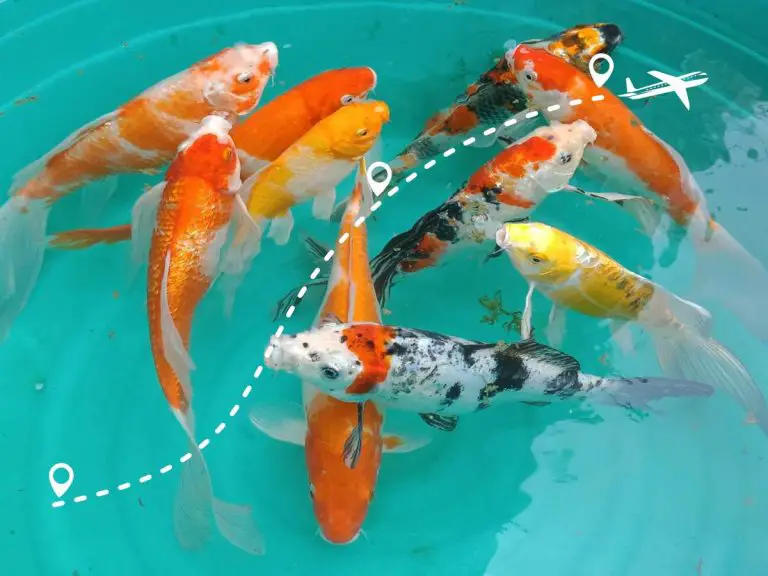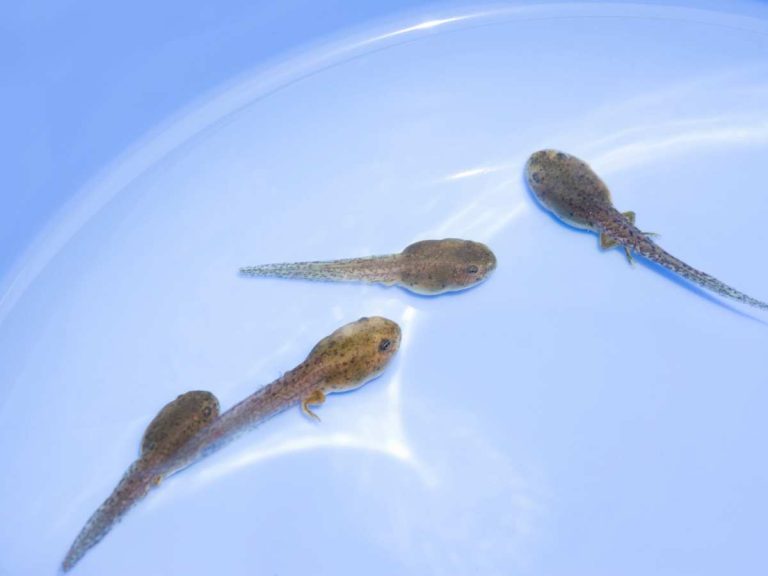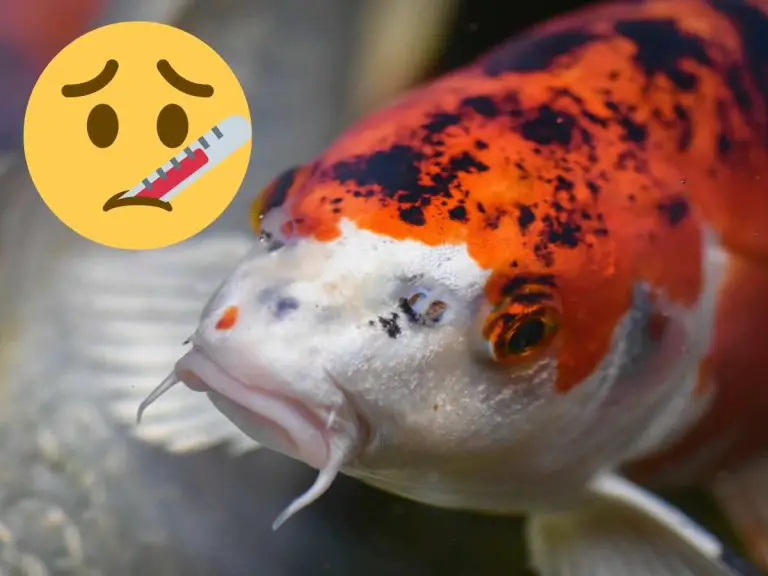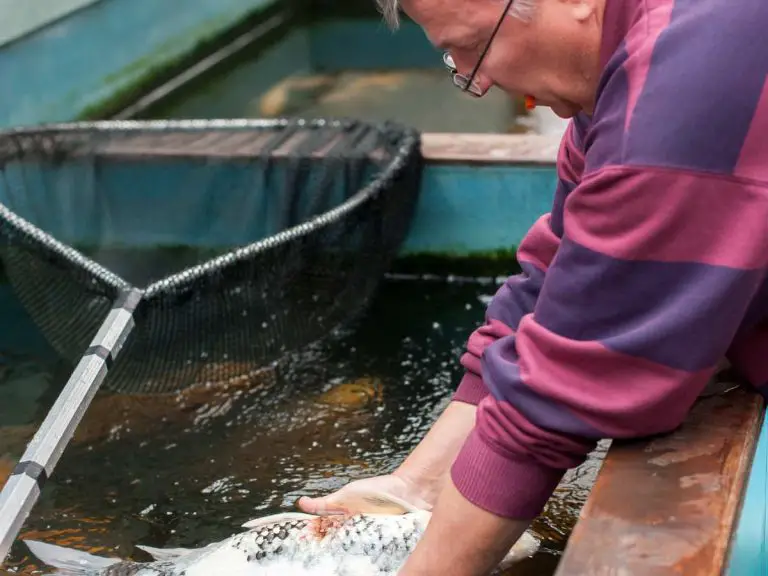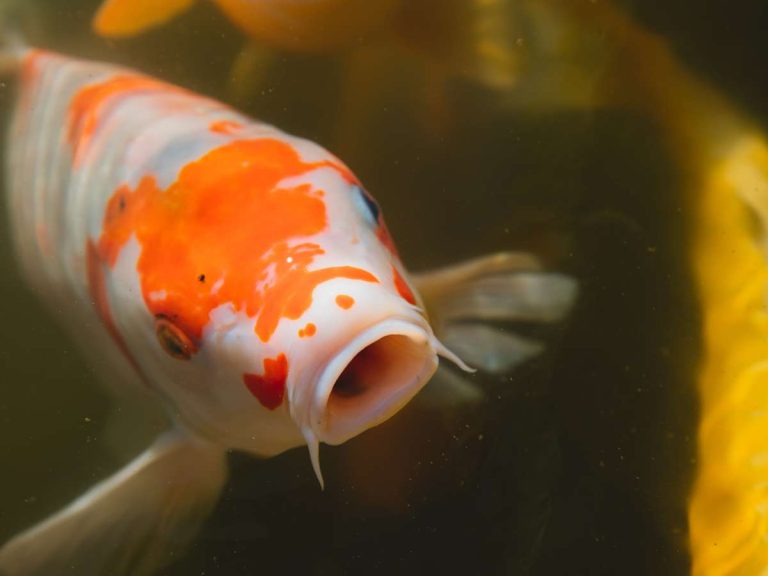How Deep Should a Koi Pond Be? Why Pond Depth Is Crucial For Happy and Healthy Koi
Wondering how deep to make your Koi pond? Well, the answer is: it depends. That said, in most cases, it’s generally recommended to make your Koi pond at least 3 feet deep to keep your fish friends happy and healthy.
But (of course) there’s actually a little more to it than that.
Koi fish need enough space to swim and grow comfortably, so the depth of your pond should accommodate their needs. Also, proper oxygen levels and water circulation are crucial for koi fish health, which is also influenced by the depth of the pond.
Don’t forget about insulation, either. The depth of a koi pond plays a role in protecting your koi fish from temperature fluctuations. Deeper areas in the pond can help maintain a stable water temperature, which is particularly important during colder seasons.
Something many people forget to consider when planning their pond is protection from preadtors. Creating barriers and hiding spots with appropriate pond depth can help minimize the risk of predator attacks. A lot of this will depend on where you live and what kind of predators regularly visit your pond.
If you just brought home some premium Koi fish for your pond (or ordered Koi online), the last thing you want is for them to be snatched away by a bird of prey because you didn’t make it deep enough.
Keep reading for more in-depth (pun intended) information that will help keep your Koi pond thriving.
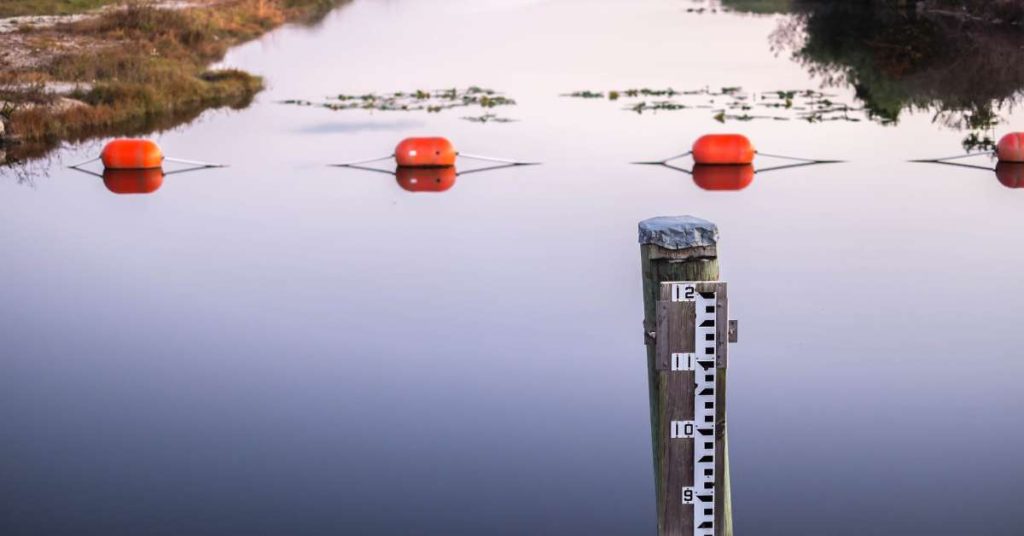
Understanding Koi Pond Depth Requirements
| Pond Purpose | Recommended Pond Depth | Recommended Based On | Additional Notes |
|---|---|---|---|
| General Ornamental | 3 to 4 feet (0.9 to 1.2 m) | Most koi sizes and moderate populations. | Suitable for most koi, provides ample swimming space. |
| Winter Climate | 4 to 6 feet (1.2 to 1.8 m) | Koi in colder climates, larger populations. | Deeper pond helps protect koi from extreme cold temperatures. |
| Large Koi Population | 6 feet (1.8 m) or more | High koi population and larger sizes. | Offers more space for koi to grow and move, minimizes aggression. |
| Breeding Pond | 3 to 4 feet (0.9 to 1.2 m) | Breeding activities and protecting eggs. | Adequate depth for breeding activities and protecting eggs. |
| Colder Climate | 4 to 6 feet (1.2 to 1.8 m) | Cold climates and larger koi. | Prevents pond from freezing entirely, provides refuge for koi in winter. |
| Natural Filtration | 2 to 3 feet (0.6 to 0.9 m) | Aquatic plant growth and smaller sizes. | Allows for optimal growth of aquatic plants for natural filtration. |
| Water Garden | 2 to 4 feet (0.6 to 1.2 m) | Aesthetic and moderate fishkeeping. | Balance between aesthetic and fishkeeping considerations. |
Factors to consider for koi fish health
When it comes to koi fish health, the depth of the pond plays a significant role. Firstly, the recommended depth of the koi pond depends on the size and growth potential of the koi fish. Different koi require various depths to thrive. Secondly, oxygen levels and water circulation are important factors to consider in relation to pond depth. Proper water circulation ensures that oxygen reaches all parts of the pond, promoting koi fish health. Lastly, a suitable depth prevents stress and injury to koi fish. By providing enough space for movement and retreat, the risk of injury and stress is minimized.
Insulation considerations for koi ponds
To protect koi fish from temperature fluctuations, the depth of the pond is crucial. The deeper the pond, the better it insulates against temperature changes. This is especially important during colder seasons, as a deeper area allows koi fish to find refuge in warmer water layers. By maintaining a stable water temperature, koi fish can avoid potential health issues caused by extreme temperature changes.
Protection against predators
The depth of a koi pond also plays a vital role in protecting the koi fish from predators. A pond with optimal depth deters predators from accessing the koi. By creating barriers and hiding spots, such as rocks and plants, within the pond, koi fish can find protection. Shallow areas should be avoided, as they can be easily accessed by predators. By considering the depth of the pond, koi fish can safely thrive without constant threat from predators.
Related Post: Why your Koi fish is flashing (and how to fix it)
Optimal depth for a koi pond
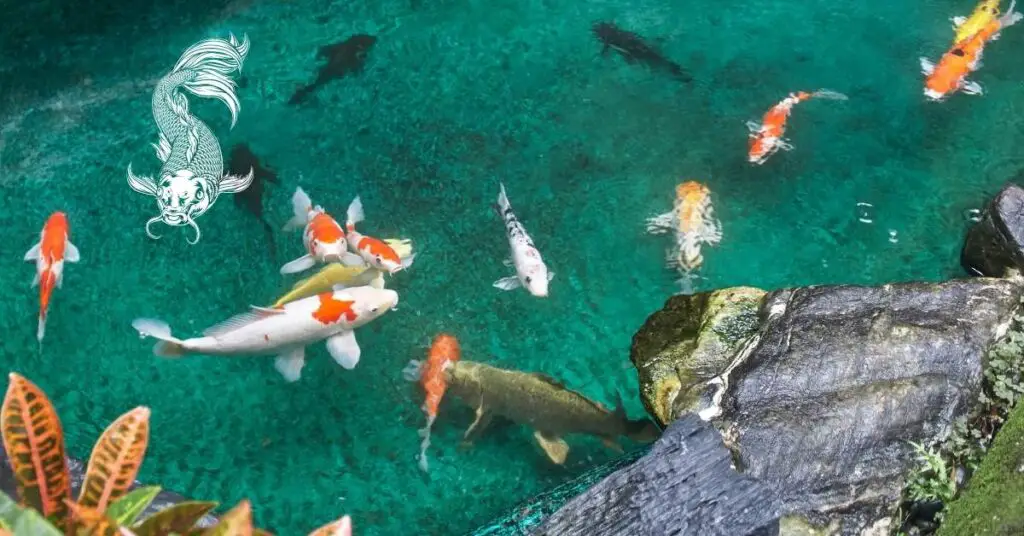
Finding the right balance of depth is essential for providing the optimal environment for your koi to thrive and enjoy their surroundings. So, let’s dive into the world of koi pond depths and explore what is considered ideal.
A. Ranges of depth commonly recommended for koi ponds
When planning the depth of your koi pond, it’s important to create different areas that cater to various needs. One common recommendation is to have shallow areas, around 2 feet deep, where koi can bask in the sun and enjoy their meals. These shallow areas are perfect for easy access to food and for koi to soak up some sun.
On the other hand, it’s also crucial to incorporate deeper areas in your pond, reaching depths of 4 to 6 feet or more. These deeper areas provide a retreat for your koi fish when they want some privacy or need protection. It also allows them to exhibit natural behaviors, like diving and swimming freely.
Of course, the size of your pond and the available space will influence the range of depths you can achieve. It’s important to find a balance that suits your koi’s needs while fitting within the space you have available.
B. Ideal depth for koi fish comfort and movement
Creating a comfortable and spacious environment for your koi fish is essential for their well-being. Providing enough depth allows your koi to move naturally and exhibit their full range of swimming patterns. Imagine your koi gracefully gliding through the water, showcasing their vibrant colors and elegant movements.
Additionally, adequate depth ensures that your koi have enough space to grow and flourish. Koi fish can reach impressive sizes, and having enough depth allows them to reach their full potential without feeling cramped or restricted.
However, while depth is important, it’s also crucial to consider visibility. You want to be able to see and enjoy your beautiful koi swimming around. So, it’s essential to strike a balance between depth and visibility to create a visually pleasing and enjoyable experience for both you and your koi fish.
Designing a proper depth for a koi pond
For your Koi pond to thrive, getting the depth right the first time is crucial. Not only does it affect the health and safety of your koi fish, but it also plays a role in maintaining proper filtration and insulation. So, let’s dive into how you can design a proper depth for your koi pond.
A. Preparing the pond site and excavation guidelines
Before you even start digging, it’s important to consider the soil conditions and stability of the area where your pond will be located. Ensuring that the ground is solid and won’t shift or collapse is vital for the longevity of your pond. Once you have a secure site, you can proceed with excavation.
When excavating, it’s a good idea to create varied depth areas within the pond. This allows for different zones where your koi fish can swim and retreat. You can achieve this by gradually sloping the pond floor or incorporating ledges and shelves at different depths. These variations not only add visual interest but also provide your koi with different depths to explore.
To maintain a healthy pond ecosystem, proper drainage is crucial. You want to ensure that excess water can easily be drained to prevent flooding. Additionally, having control over the water level in your pond is important, especially during maintenance or in case of emergencies. So, make sure you have a reliable drainage system and consider installing water level control mechanisms.
B. Incorporating ledges and shelves for desired depth
Ledges and shelves are a great addition to any koi pond design. They serve several purposes that benefit both the aesthetics and functionality of your pond. Ledges provide shallow areas where your koi can bask and feed, allowing them to enjoy some sunshine and make feeding time more accessible.
Strategically placed shelves can help create variations in depth, providing your koi fish with different levels to explore and hide. These ledges and shelves can be made from materials like rocks or concrete, as long as they are sturdy and don’t pose a risk to your fish. Remember to size them appropriately to accommodate the size and number of koi you plan to have in your pond.
By incorporating ledges and shelves into your pond design, you can create a natural-looking environment that mimics the different depths of their natural habitat. It’s essential to distribute these depth variations throughout the pond to ensure a balanced and visually appealing layout.
How deep should a koi pond be for filtration systems
When it comes to koi ponds, having an effective filtration system is crucial for maintaining clean and healthy water. But how does the depth of the pond impact the filtration process? Let’s dive in and explore the relationship between pond depth and filtration systems.
A. Understanding the relationship between pond depth and filtration
When choosing a filtration system for your koi pond, it’s essential to consider the depth requirements of the different types of systems available. Some filtration systems are designed to work best in shallow ponds, while others are more suitable for deeper ponds.
Factors such as the size of your pond, the number of koi fish, and the amount of waste produced will influence the choice of filtration system. It’s important to select a system that can effectively handle the volume of water in your pond and provide adequate filtration for the waste generated by your fish.
Ensuring that your koi pond has the right depth is crucial for the effective functioning of the filtration system. A sufficient depth helps to create a balanced ecosystem by providing space for beneficial bacteria growth, which plays a key role in breaking down harmful waste and maintaining water quality.
B. Placement and construction considerations for filtration systems
Once you’ve chosen the appropriate filtration system for your koi pond, it’s essential to consider its placement and integration with the pond depth design.
Positioning your filters and water circulation devices strategically is important for maximizing their efficiency. Placing them at varying depths ensures that water is properly circulated and filtered throughout the entire pond, preventing stagnant areas and helping to maintain water clarity.
In addition to the depth requirements for filtration systems, it’s also important to consider the overall balance of your pond’s ecosystem. The depth of your pond will affect factors such as oxygen levels, water temperature, and the availability of nutrients for plants and microorganisms. Finding the right balance is critical for creating a healthy environment for both your koi fish and the filtration system to thrive.
By maintaining the optimal depth for your koi pond, you can ensure that your filtration system functions effectively and keeps the water clean and clear. Regular monitoring and maintenance will help you identify any issues and make adjustments as needed to maintain the ideal depth for your filtration system.
Ensuring insulation in a koi pond with proper depth
A. Factors affecting temperature fluctuations in a koi pond
When it comes to keeping your koi fish happy and healthy, temperature stability is crucial. The last thing you want is to subject them to extreme temperature fluctuations that can be harmful to their well-being. Several factors can impact the temperature of your koi pond, including external weather conditions, sun exposure, and shade.
B. Additional insulation measures for koi pond depth
While maintaining optimal depth is important for insulating your koi pond, there are additional measures you can take to enhance insulation and protect your fish from temperature extremes. One option is to use insulation materials to provide an extra layer of protection. You can also strategically incorporate plants and landscaping to provide shade and help regulate temperature. By monitoring and adjusting the pond depth as needed, you can fine-tune the insulation of your koi pond.
Protect Your Koi From Predators With The Right Pond Depth
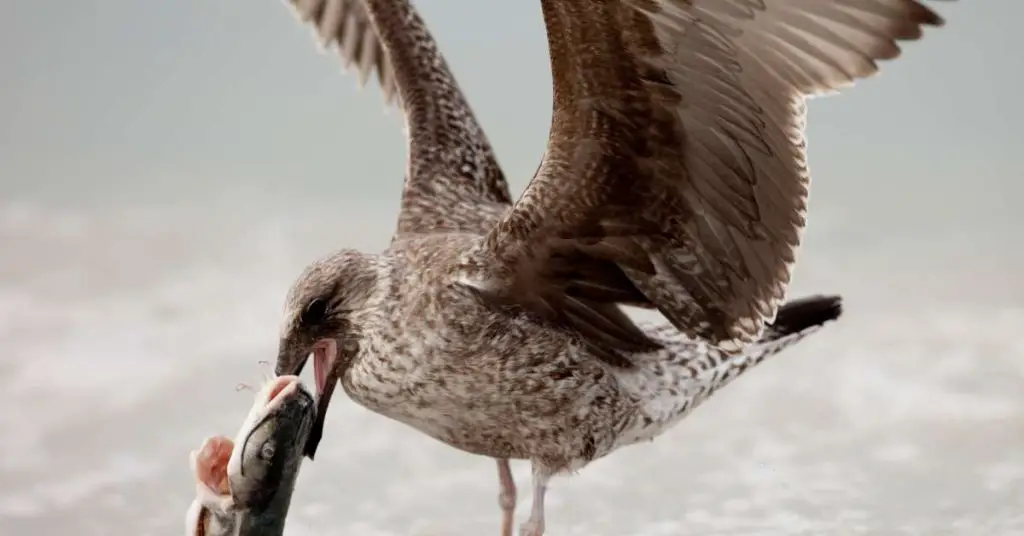
Predators can be a major concern when it comes to keeping koi fish safe in their pond. Whether it’s herons, raccoons, or other curious critters, predators are always on the lookout for a tasty meal. That’s why the depth of your koi pond plays a crucial role in protecting your beloved fish.
A. Importance of depth in predator prevention
Predators are less likely to venture into deeper waters, as it’s more difficult for them to maneuver and catch their prey. Having a koi pond with a sufficient depth can serve as a natural deterrent, keeping those hungry predators at bay.
When designing your pond, consider incorporating different depth levels to discourage predators from getting too close. This can be achieved by creating gently sloping ledges or incorporating strategically placed plants and rocks that provide hiding spots for your koi fish.
B. Incorporating shelter and hiding spots in the pond depth
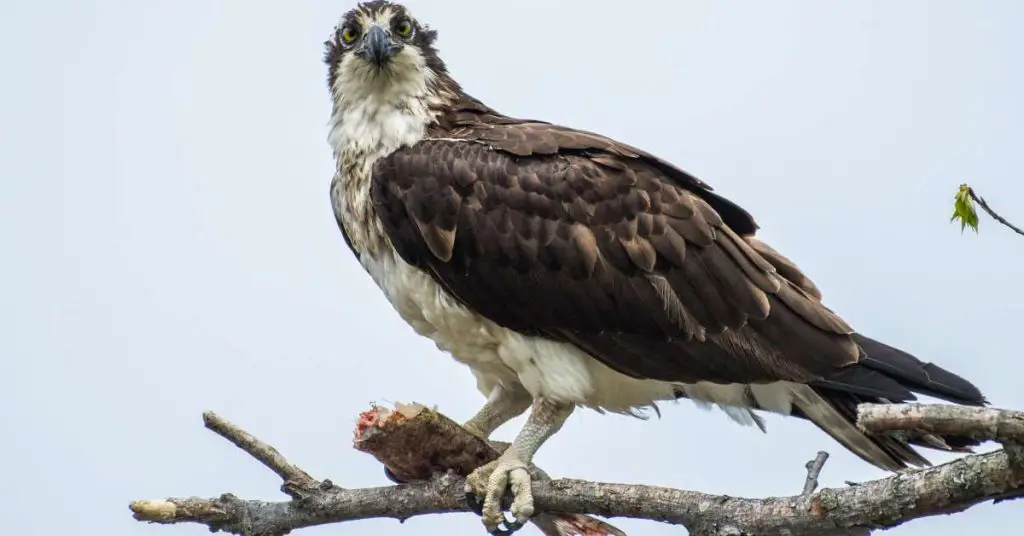
To ensure the ultimate protection for your koi, it’s important to design your pond with their safety in mind. Creating caves, nooks, and vegetation within the pond’s depth allows your koi fish to hide and seek refuge when needed.
Strategically placing rocks or logs can create a sense of security for your koi, giving them a place to escape to if a predator approaches. These hiding spots not only provide physical protection but also mimic their natural habitat, making your koi fish feel more at home.
Remember, predators are sly and determined, so it’s crucial to strike a balance between the depth and structure of your pond. Too shallow, and predators may have easy access. Too deep, and your koi fish may feel vulnerable or stressed. Regular monitoring and adjusting of the pond depth can help reinforce these protection measures.
Final Thoughts
So, there you have it – several key considerations to keep in mind when determining the ideal depth for a koi pond.
It’s clear that there are multiple factors that come into play, and realistically you can’t address them all, so finding the right balance is crucial for creating a suitable environment for your beloved koi fish. Let’s quickly recap the main points we discussed:
- The recommended depth for a koi pond depends on factors such as koi fish health, insulation, protection, and filtration.
- For koi fish health, the pond depth should consider koi fish size, oxygen levels, water circulation, and prevention of stress and injury.
- Insulation is important to protect koi fish from temperature fluctuations, and deeper areas provide stability during colder seasons.
- Pond depth can deter predators and proper design includes barriers, hiding spots, and avoiding shallow areas.
- Creating depth variations in the pond allows for different koi fish activities and behaviors while balancing with visibility for viewing pleasure.
- Proper pond site preparation, excavation guidelines, and incorporation of ledges and shelves contribute to the desired depth.
- Filtration systems require adequate pond depth and strategic positioning to ensure effective water purification.
- Insulation measures like sun exposure, shade considerations, and the use of materials and landscaping can help maintain stable water temperature.
- Protecting koi fish from predators involves designing appropriate pond depth, incorporating shelter and hiding spots, and adjusting depth as needed.
Remember, the depth of your koi pond should not be a one-size-fits-all approach. By considering all these factors and applying the provided information, you can create a pond that not only showcases the beauty of your koi fish but also promotes their health, safety, and overall well-being.
Related Questions
Can I have a shallow area in my koi pond?
Yes, it is recommended to have a shallow area in your koi pond. Shallow areas provide space for koi fish to bask in the sun and feed. However, it’s important to also include deeper areas in the pond for koi fish retreat and protection against predators.
How can I maintain proper water temperature in my koi pond?
To maintain proper water temperature in your koi pond, consider the depth of the pond. Deeper areas provide insulation against temperature fluctuations. Additionally, you can use shading techniques, insulation materials, and strategically placed plants to help regulate the temperature. Monitoring and adjusting the pond depth can also help optimize the insulation and maintain a stable water temperature for your koi fish.


